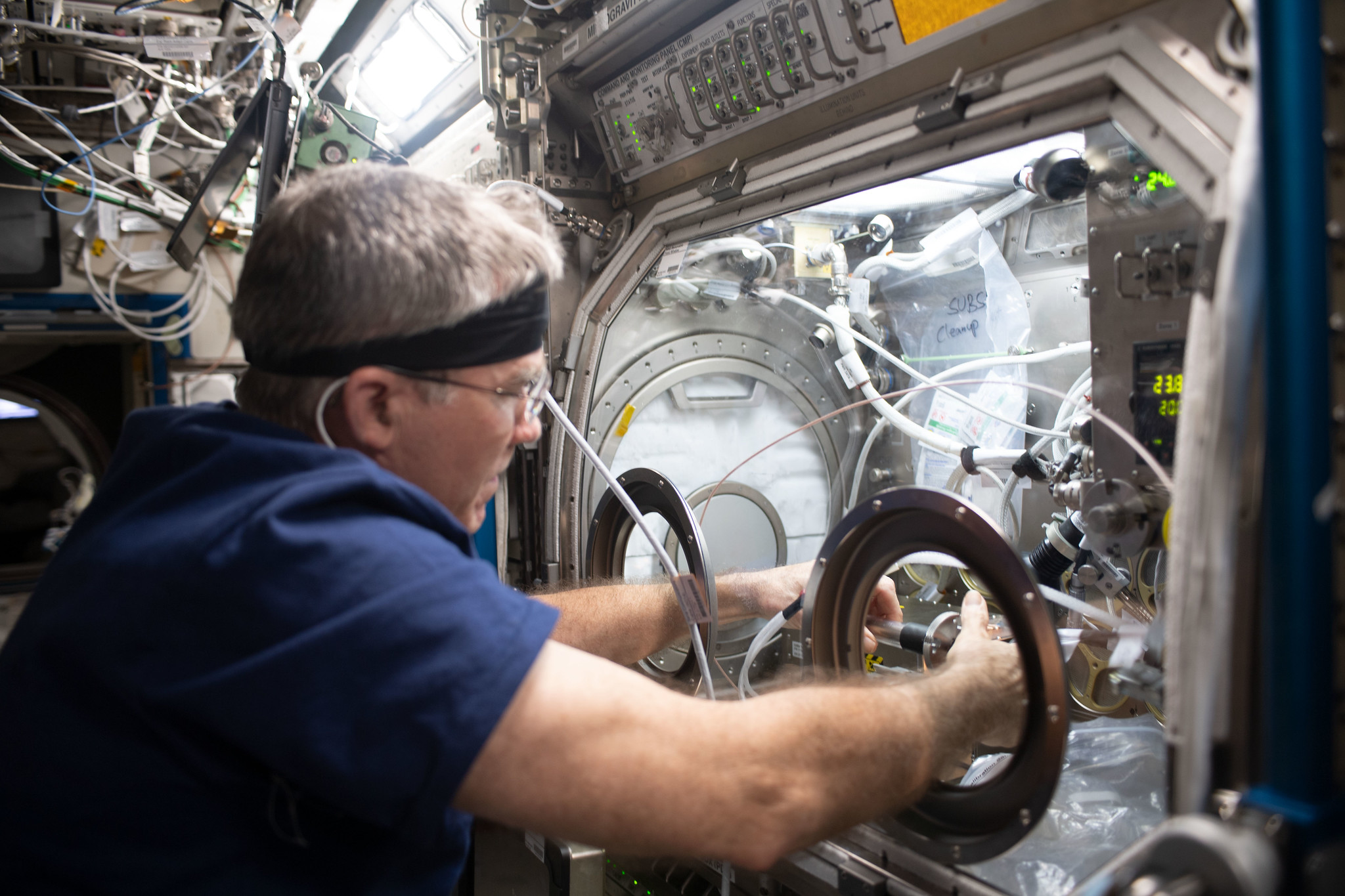WASHINGTON — NASA is preparing for the release of a new decadal survey for space research that the agency hopes will provide guidance on research to pursue on the International Space Station and how to transition that to commercial successors.
The National Academies announced Aug. 23 that it will release the decadal survey for biological and physical sciences research in space Sept. 12 at a public event in Washington. The document, titled “Thriving in Space,” will prioritize research in space biological and physical sciences over the next decade.
The primary customer for the decadal survey is NASA, and the head of the agency division that manages that research said in a recent interview that she hopes the decadal provides clear guidance on the topics it should pursue in the next decade.
“The ideal scenario coming out of his decadal would be very targeted priority focus areas,” said Lisa Carnell, director of the biological and physics sciences (BPS) division in NASA’s Science Mission Directorate. “A decadal that has 101 priority areas doesn’t have a priority area.”
Along with that focus, she said she’d like to see “decision rules” included in the decadal, similar to those incorporated into decadal surveys in other science fields but not in the previous BPS decadal. Those rules specify what should be reduced or eliminated if funding falls short of budget projections made in the decadal.
The upcoming decadal covers research through 2032, past the planned retirement of the ISS in 2030. NASA is supporting several efforts to develop commercial stations that can serve as successors to the ISS, called commercial low Earth orbit destinations, or CLDs, by the agency.
Carnell said that while she will look for guidance in the decadal on how to manage that transition, it may be difficult given the rapidly evolving commercial environment. “A question I have for the decadal and its sustainability over 10 years is that space has become so dynamic,” she said. “How will the recommendations be able to adapt to this evolving environment?”
Her division has already been active in planning for a transition from the ISS to commercial platforms. That included a white paper earlier this year that outlined all the current and planned research capabilities of the ISS, which she said was intended to ensure the commercial station developers were fully informed about ISS research. “We wanted to give them the opportunity to see it all and see what their interests were in providing it.”
The BPS division has also been trying to prepare for a new era of commercial research through a program called Commercially Enabled Rapid Space Science, or CERISS. The initiative, announced last year, could eventually involve flying scientists on private astronaut mission to the ISS to be able to conduct the research on the station rather than having NASA astronauts perform it.
While a proposed budget increased needed for CERISS did not materialize for fiscal year 2023, delaying that effort, Carnell said it remains a long-term priority for her division. Such researchers, she said, would be analogous to payload specialists who flew on shuttle missions but were not full-time astronauts. “They’re moving forward,” she said of those efforts, if slowly. “We’ll see what the decadal comes out with.”
Suborbital research, she said, could provide a step towards flying scientists on orbital flights. NASA’s Flight Opportunities program now allows researchers to fly with their experiments on commercial suborbital vehicles, and the agency’s Suborbital Crew, or SubC, program is exploring how to enable NASA civil servants to go on such flights, potentially as soon as next year.
“Change is hard, but it also brings a lot of opportunity and excitement,” she said in general of new research opportunities enabled by commercial platforms. “There will be some growing pains, but I do think it’s going to be a huge benefit for NASA and for the space industry.”
While the focus of BPS research has been on the ISS, Carnell said that another topic she will look for the decadal for guidance on is activities beyond LEO. The division is already planning for research on the lunar Gateway and on Artemis missions, including “getting close” to flying a tissue organ model experiment on an Artemis lunar lander.
“The future of exploration demands that we go beyond LEO, so what I would really like to see them call out is what part of our portfolio should be dedicated to beyond LEO and how much we should remain doing in LEO,” she said of the decadal.
